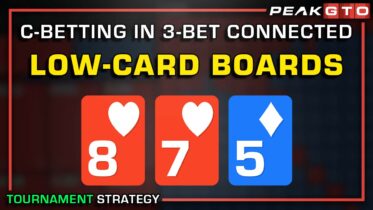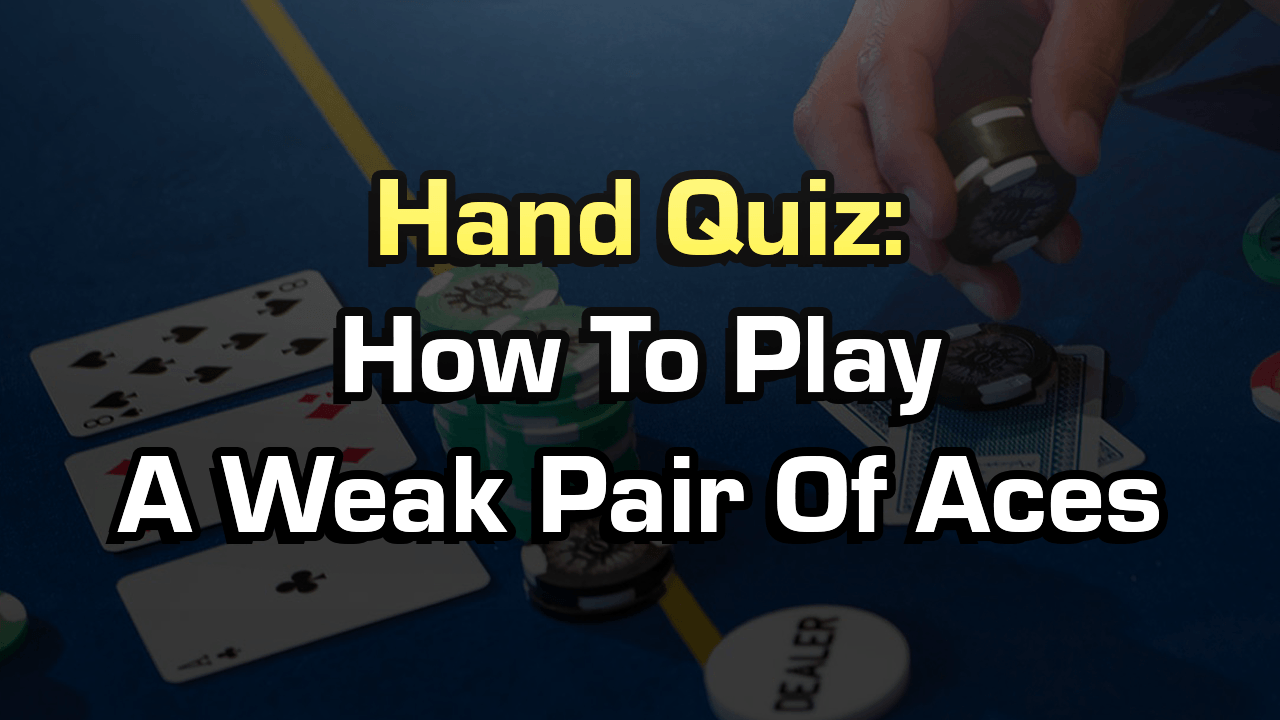Cash games offer great opportunities to practice playing deep stacked poker. When you have the big stack advantage in a cash game, you can leverage your position and gain an edge over opponents, especially when they lack experience. Having the ability to induce mistakes at the poker table will help you make money long term. Study this hand, and apply what you learn on the felt.
Scenario: You are 9-handed playing in a $2/$5 cash game sitting with a stack of $1,475. It folds around to an inexperienced player in the hijack who raises to $15. The cutoff folds, and action is on you as you look down at A♣-10♠ on the button.
The Game: $2/$5 Cash Game
Effective Stack: 295 Big Blinds
Your Hand: A♣-T♠
Preflop Analysis
You have a hand that you can go in a few different directions, either raising or calling are perfectly fine options. Since you have a hand containing some valuable blockers, you can raise not only with your blockers but with the added benefit of position as the dealer. While you can raise to either take down the pot preflop or make it heads-up, you can also call to see what the two players yet to act do.
Action: You call, and both the small blind and big blind call as well. The flop comes A♦-T♥-7♠, both blinds check while the hijack bets $15.
Flopping Top Two Pair
The Pot: $60
The Board: A♦-T♥-7♠
Effective Stack: 292 Big Blinds Effective
Flop Analysis
The $15 bet from the hijack could very well be a block bet, and since you have a hand that can draw value from a lot of hands in your opponent’s range, you should raise with your top two pair.
If you elect to just call, you offer both blinds a great price to stay in the hand with their draws. The small blind or big blind could very well be sitting on a gutshot-straight draw, you would much rather force them out of the hand now than provide them with a cheap turn card.
$45 is the ideal raise size, raising larger will only force the hijack out of the hand before they can add to it. With only $370 remaining, there is a good chance you can induce the hijack into contributing the rest of their stack, all while being ahead with the best two pair.
Action: You raise $45 and only the hijack calls. The turn card is the 9♠ and your opponent checks.
More Draws Come In On The Turn
The Pot: $150
The Board: A♦-T♥-7♠-9♠
Effective Stack: 283 Big Blinds Effective
Turn Analysis
The biggest thing to recognize is how draw heavy the board is. There are plenty of straight draws and the backdoor flush draw just came into play. When the board is draw heavy, it is the perfect time to bet big with your strong, yet vulnerable hands. Your opponent only has $340 remaining, if you think they may call with a draw or a paired ace, moving all-in is not a bad option.
While you could go all-in, betting $120 has a higher likelihood of being called and sets up a stack-to-pot ratio that forces your opponent into moving all-in regardless of what the river is. Bet $120 to not only apply pressure, but to induce your opponent into playing for all their chips on the river.
Action: You bet $120 and your opponent calls. The river is the 3♠ and your opponent checks.
Making Your Opponent Go All-In On The River
The Pot: $390
The Board: A♦-T♥-7♠-9♠-3♠
Effective Stack: 259 Big Blinds Effective
River Analysis
The way your opponent has played the hand, they could very well have a paired ace that has been behind since the flop. With the stack-to-pot ratio and the added benefit of blocking a spade, this is a great time to make your opponent play for their remaining $220. The goal should be to go for full value when you have the hands to do so. With all of the hands in your opponent’s range that would be willing to call an all-in, it’s time to pull the trigger and ship it.
Conclusion
You force your opponent all-in, and although you played the hand perfectly, your opponent, unfortunately, flipped over A♠-4♠ for the nut flush. Sometimes you may not win the pot in a poker hand, but even when you lose, you can win yourself valuable lessons. Even though your opponent hit you with the runner-runner flush, the majority of the time you are going to be pulling this pot towards your stack. Remember that even when the right plays don’t produce profit, over the long term sticking with a sound strategy will produce more wins than losses. If you enjoyed this hand quiz, be sure to check out last week’s quiz featuring PokerCoaching.com coach Matt Affleck.




